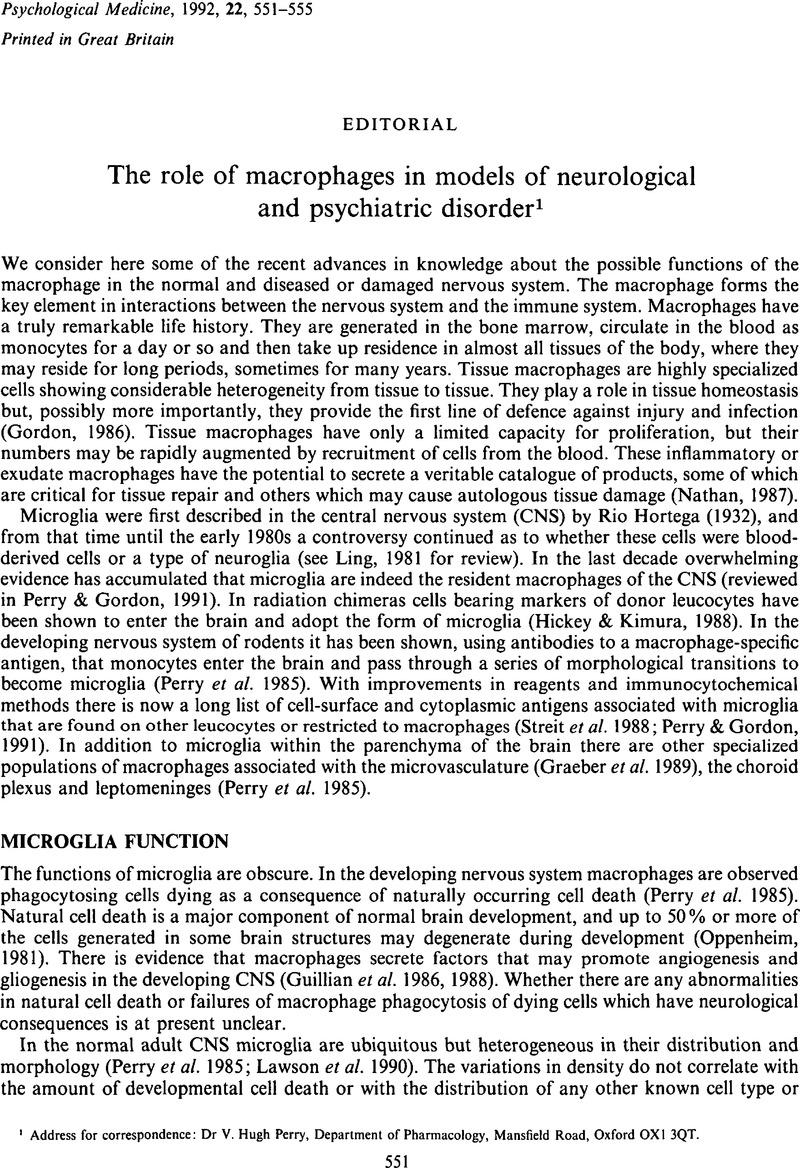Crossref Citations
This article has been cited by the following publications. This list is generated based on data provided by Crossref.
Bilfinger, Thomas V.
Fricchione, Gregory
and
Stefano, George B.
1993.
Neuroimmune implications of cardiopulmonary bypass.
Advances in Neuroimmunology,
Vol. 3,
Issue. 4,
p.
277.
Klegeris, A.
Budd, T. C.
and
Greenfield, S. A.
1994.
Acetylcholinesterase activation of peritoneal macrophages is independent of catalytic activity.
Cellular and Molecular Neurobiology,
Vol. 14,
Issue. 1,
p.
89.
Stefano, George B.
Bilfinger, Thomas V.
and
Fricchione, Gregory L.
1994.
The immune-neuro-link and the macrophage: Postcardiotomy delirium, HIV-associated dementia and psychiatry.
Progress in Neurobiology,
Vol. 42,
Issue. 4,
p.
475.
Rogers, Malcolm P.
and
Fozdar, Manish
1996.
Psychoneuroimmunology of autoimmune disorders.
Advances in Neuroimmunology,
Vol. 6,
Issue. 2,
p.
169.
Rapoport, Mark J.
van Reekum, Robert
Freedman, Morris
Streiner, David
Simard, Martine
Clarke, Diana
Cohen, Tammy
and
Conn, David
2001.
Relationship of psychosis to aggression, apathy and function in dementia.
International Journal of Geriatric Psychiatry,
Vol. 16,
Issue. 2,
p.
123.
Francis, Paul
and
Minger, Stephen
2004.
Cholinergic Mechanisms.
p.
431.
Hathway, Gareth J.
Vega-Avelaira, David
Moss, Andrew
Ingram, Rachel
and
Fitzgerald, Maria
2009.
Brief, low frequency stimulation of rat peripheral C-fibres evokes prolonged microglial-induced central sensitization in adults but not in neonates.
Pain,
Vol. 144,
Issue. 1,
p.
110.
Kream, Richard M.
2015.
Hypoxia defined as a Common Culprit/Initiation Factor in Mitochondrial-Mediated Proinflammatory Processes.
Medical Science Monitor,
Vol. 21,
Issue. ,
p.
1478.



